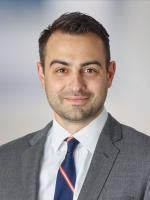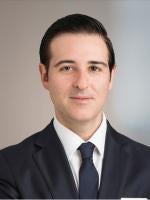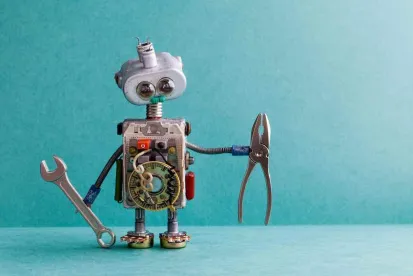Striking a blow to patent applicants seeking to assert inventorship by artificial intelligence (“AI”) systems, the U.S. District Court for the Eastern District of Virginia ruled on September 3, 2021 that an AI machine cannot qualify as an “inventor” under the Patent Act. The fight is now expected to move to the Federal Circuit on appeal.
Proskauer has been closely monitoring the quickly-developing legal treatment of AI systems, especially in view of their implications for life sciences patents. AI’s presence in life sciences innovation is well established, for example, to predict biological targets of prospective drug molecules and to identify drug design candidates (among many other applications). As we reported in August, two countries—Australia and South Africa—have already permitted AI systems to qualify as “inventors” in patent applications. However, hope for a worldwide trend have been dashed, at least for now.
Patent applicant Stephen Thaler and his AI system called DABUS (“Device for Autonomous Bootstrapping of Unified Sentience”) is at the center of these developments. Naming DABUS as an inventor of his applications, Thaler obtained a South African patent without debate, and successfully argued to an Australian court that the Australia Patents Act should have a flexible interpretation of “inventorship” to include AI, because such interpretation would promote innovation and further pharmaceutical research. The USPTO, however, rejected Thaler’s application, concluding that an inventor must be a natural person under the Patent Act. Thaler then asked the U.S. District Court for the Eastern District of Virginia to vacate the USPTO’s decision and reinstate his patent application.
The Court, on motions for summary judgment, affirmed the USPTO’s determination that an inventor must be a natural person. Focusing on the “plain language” of the 2011 America Invents Act, which provided “an explicit statutory definition for the term ‘inventor,’” the Court’s decision came down to the meaning of a single word: “individual.”
The Court found that meaning in a Supreme Court decision construing the term “individual” in the Torture Victim Protection Act (“TVPA”) to mean “natural person[].” Although concerning different subject matter than the Patent Act, the District Court applied the Supreme Court’s definition of “individual” because, like the TVPA, the Patent Act used the term “individual” in its “ordinary usage,” which was “to refer to a human being.” Indeed, 35 U.S.C. § 115(b) references the “individual” as “himself or herself,” which the Court found evidenced Congress’s clear intent to “referenc[e] a natural person.” Further supporting this interpretation, according to the Court, were the Federal Circuit’s “consistent holdings” (albeit in a different context) that “inventors must be natural persons.”
Thaler, however, encouraged the Court to interpret inventorship in a manner “consistent with the Founders’ intent in enacting the Patent and Copyright Clause,” which, according to Thaler, was “to promote disclosure of information and commercialization of new technologies.” Taking too literal a reading of “inventor,” argued Thaler, would frustrate this intent, particularly where “it is unlikely that Congress anticipated and legislated for the specific circumstances at issue.” Thaler warned, “excluding an entire class of inventions from patentability would undermine the patent system,” as AI-generated inventions may “one day become the primary source of innovation.” The Court was not swayed by these arguments, which the Court characterized as based in policy, rather than law. According to the Court, Thaler’s positions could not “override the plain meaning of a statutory term,” and in any event, “[m]atters of policy are for Congress, not the courts, to decide.” Had Congress intended AI systems to be considered “inventors,” the Court found, Congress could have explicitly included AI systems in the definition, added in 2011, “when artificial intelligence was already in existence.”
The decision, unfortunately, leaves unresolved how to obtain patent protection on innovations generated by AI systems. However, the USPTO’s summary judgment brief hinted at a potential solution—“the use of a machine as a tool by natural person(s) does not generally preclude natural person(s) from qualifying as an inventor or joint inventors if the natural person(s) contributed to the conception of the claimed invention.” That assertion, of course, begs the question of what happens when no natural person contributes to the invention.
Thaler has indicated that he intends to appeal the District Court’s decision to the Federal Circuit. We will continue to monitor and report developments on this novel legal issue. The case is Thaler v. Hirshfeld, No. 1:20-cv-00903, pending in the U.S. District Court for the Eastern District of Virginia, a copy of which can be found here.




 />i
/>i
